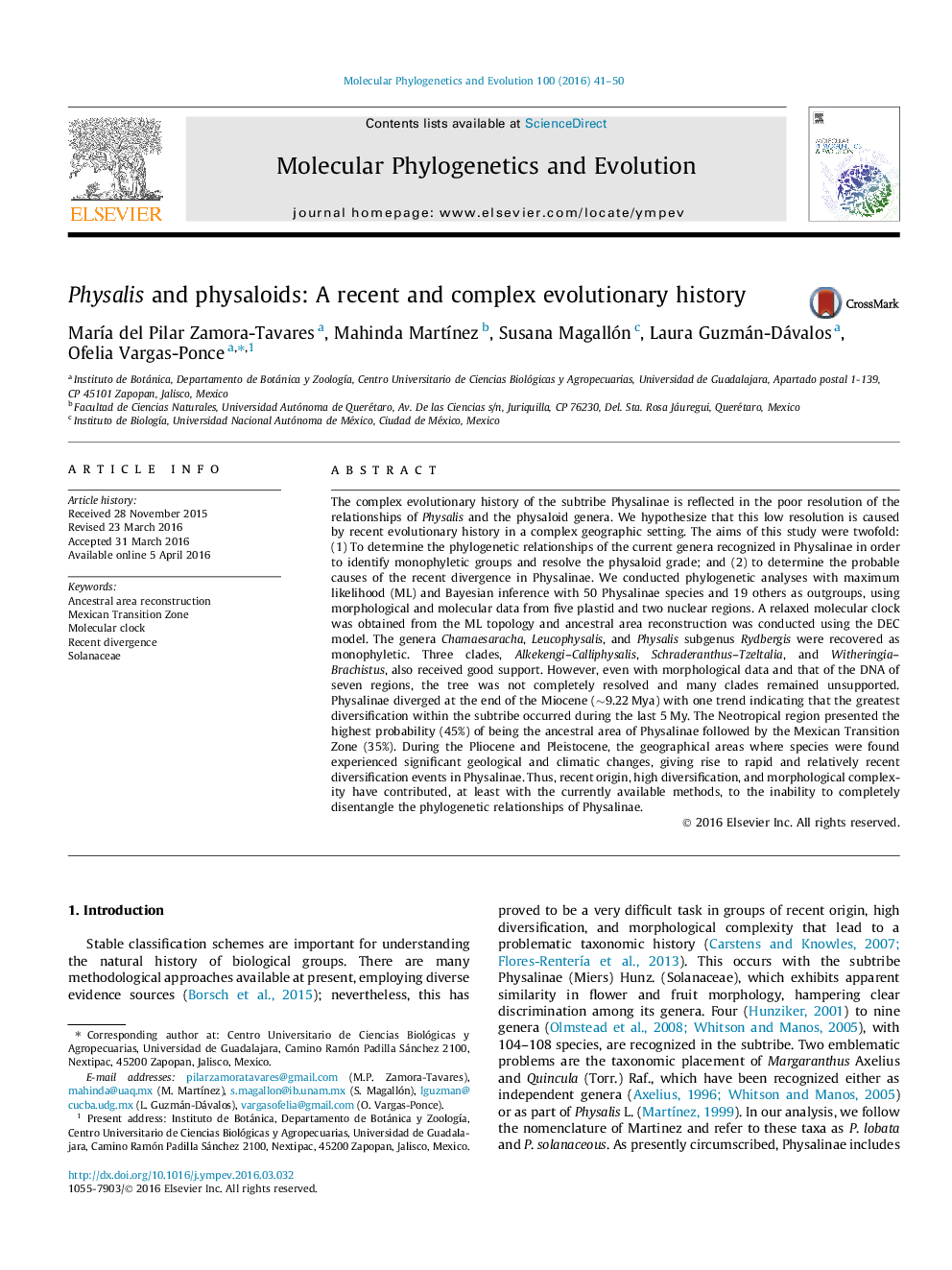| کد مقاله | کد نشریه | سال انتشار | مقاله انگلیسی | نسخه تمام متن |
|---|---|---|---|---|
| 2833651 | 1570797 | 2016 | 10 صفحه PDF | دانلود رایگان |

• Physalinae includes 12 genera, some of which are of difficult circumscription.
• We infer relationships, divergence times, and areas of ancestral distribution in Physalinae.
• We increased DNA data with five plastid regions but the poor resolution remains.
• Physalinae diverged at the end of the Miocene and more intensively in the last 5 My.
• The most probable ancestral area of Physalinae is a combination of the Neotropical and Mexican Transition Zone.
The complex evolutionary history of the subtribe Physalinae is reflected in the poor resolution of the relationships of Physalis and the physaloid genera. We hypothesize that this low resolution is caused by recent evolutionary history in a complex geographic setting. The aims of this study were twofold: (1) To determine the phylogenetic relationships of the current genera recognized in Physalinae in order to identify monophyletic groups and resolve the physaloid grade; and (2) to determine the probable causes of the recent divergence in Physalinae. We conducted phylogenetic analyses with maximum likelihood (ML) and Bayesian inference with 50 Physalinae species and 19 others as outgroups, using morphological and molecular data from five plastid and two nuclear regions. A relaxed molecular clock was obtained from the ML topology and ancestral area reconstruction was conducted using the DEC model. The genera Chamaesaracha, Leucophysalis, and Physalis subgenus Rydbergis were recovered as monophyletic. Three clades, Alkekengi–Calliphysalis, Schraderanthus–Tzeltalia, and Witheringia–Brachistus, also received good support. However, even with morphological data and that of the DNA of seven regions, the tree was not completely resolved and many clades remained unsupported. Physalinae diverged at the end of the Miocene (∼9.22 Mya) with one trend indicating that the greatest diversification within the subtribe occurred during the last 5 My. The Neotropical region presented the highest probability (45%) of being the ancestral area of Physalinae followed by the Mexican Transition Zone (35%). During the Pliocene and Pleistocene, the geographical areas where species were found experienced significant geological and climatic changes, giving rise to rapid and relatively recent diversification events in Physalinae. Thus, recent origin, high diversification, and morphological complexity have contributed, at least with the currently available methods, to the inability to completely disentangle the phylogenetic relationships of Physalinae.
Figure optionsDownload as PowerPoint slide
Journal: Molecular Phylogenetics and Evolution - Volume 100, July 2016, Pages 41–50